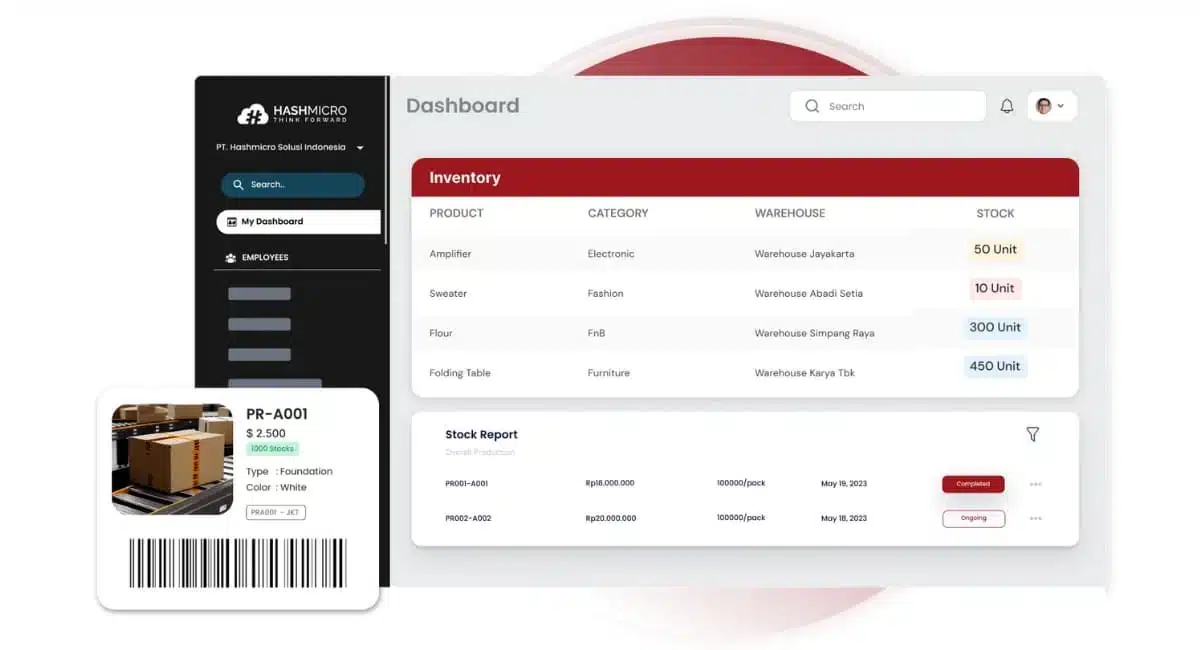Are you aware of how well your business manages inventory? Are you tracking how long your stock stays on the shelves before being sold? Understanding your days’ sales in inventory (DSI) could reveal crucial insights into your operational efficiency.
Days sales of inventory (DSI) is a key performance metric that measures the average number of days it takes for a company to sell its entire inventory during a specific period. It plays a significant role in assessing how effectively a company manages its inventory.
In this article, we will explore the meaning of DSI, how it is calculated, and its importance. We’ll also examine how it compares with other metrics, like Inventory Turnover Days, and provide tips for improving your inventory management strategy.
Key Takeaways
|
What is Days Sales of Inventory (DSI) and Why is It Important?
Days sales of inventory (DSI) indicates the average number of days a company takes to sell its inventory. A higher DSI means it takes longer to sell stock, while a lower DSI suggests faster inventory turnover.
To calculate DSI, use this inventory age calculator formula:
DSI = (Average Inventory / Cost of Goods Sold) × 365
This gives you the days to sell the inventory based on the annual cost of goods sold.
DSI helps businesses assess the efficiency of their inventory management. A low DSI indicates efficient inventory use, while a high DSI can signal overstocking or slow-moving products, leading to higher storage costs and tied-up capital.
Knowing their DSI can guide businesses in purchasing and sales strategies. It can also help balance inventory levels, reduce waste, and improve cash flow, leading to better financial performance.
DSI vs Inventory Turnover: What’s the Difference?

Inventory turnover is a metric that shows how often a company sells and replaces its inventory over time. It’s a direct measure of inventory efficiency, calculated by dividing the cost of goods sold by average inventory.
Key Differences Between DSI and Inventory Turnover:
1. Focus
DSI measures the time it takes to sell inventory, while Inventory Turnover shows how often inventory is sold and replaced. Both metrics provide valuable insights but from different perspectives.
2. Calculation
DSI is calculated using the formula (Average Inventory / Cost of Goods Sold) × 365, while Inventory Turnover is derived from dividing the cost of goods sold by the average inventory. These provide different angles on inventory performance.
3. Interpretation of Results
DSI focuses on the “days” aspect, making it more useful for understanding cash flow and storage time. At the same time, Inventory Turnover highlights overall sales efficiency, indicating how quickly inventory moves through the business.
4. Practical Application
DSI helps businesses optimize storage costs and manage cash flow, while Inventory Turnover is more geared toward assessing sales effectiveness and identifying fast or slow-moving stock.
Benefits of Measuring DSI for Your Business
Understanding and measuring DSI offers several advantages for businesses. By keeping track of this metric, you can optimize your inventory strategy, improve cash flow, and reduce storage costs. Let’s dive deeper into the key benefits:
1. Improved cash flow
Monitoring DSI helps prevent overstocking, which ties up capital in unsold goods. Reducing excess inventory frees up cash for other business areas, improving liquidity.
2. Better inventory management
Businesses can identify slow-moving products by analyzing DSI and adjusting their procurement strategies. This helps maintain optimal inventory levels and avoid both stockouts and overstocking.
3. Cost efficiency
A lower DSI means that inventory is sold faster, reducing storage and handling costs. Efficient inventory turnover leads to significant savings, improving profit margins.
4. Strategic decision making
Measuring DSI provides actionable insights into the performance of different product lines. It lets businesses make informed pricing, promotions, and production planning decision with the help of cloud based inventory systems that offer real-time data.
Key Components in Calculating DSI

For accurate DSI calculation, several key components must be considered. These components directly impact the results, and understanding them will help businesses assess inventory health more effectively:
1. Average inventory
Average inventory shows the typical stock level a business maintains over a period, smoothing out fluctuations. It helps assess inventory turnover and management efficiency, offering a clearer picture of inventory health.
2. Cost of goods sold (COGS)
The total cost of goods sold during the period is another vital component. COGS includes direct costs like materials and labor, and it’s used in the formula to assess how quickly inventory is being sold.
3. Period
The period over which DSI is measured (usually 365 days) is essential. It ensures consistency when comparing DSI across different periods and helps businesses gauge whether performance is improving or declining.
4. Inventory type
Different types of inventory (raw materials, work-in-progress, and finished goods) may have different turnover rates. Understanding how each type affects overall DSI can provide more granular insights into inventory management.
Common Problems with DSI and How to Avoid Them
Monitoring DSI effectively can reveal potential issues with inventory management. Two common problems—DSI too high and DSI too low—can significantly impact your business operations. Here’s how to manage these challenges:
1. DSI too high (slow inventory movement)
A high DSI means products aren’t selling quickly, resulting in tied-up capital and increased storage costs. To avoid this, identify slow-moving stock, reduce overstocking, and implement targeted marketing strategies to boost sales as well as using an inventory movement report to see your inventory even clearer.
2. DSI too low (stockouts and missed sales)
A very low DSI might indicate that inventory levels are too low, risking stockouts and missed revenue opportunities. Monitor sales trends carefully to maintain enough stock to meet demand without overstocking.
3. Inaccurate data
Incorrect inventory records can distort your DSI calculations. Regular inventory audits and reliable inventory management systems are essential for accurate data and meaningful insights.
HashMicro Inventory Software: The Smart Way to Manage DSI Effectively

HashMicro streamlines inventory management with real-time insights into stock levels, turnover rates, and Days Inventory Outstanding. This allows businesses to maintain optimal stock levels, avoid overstocking, and reduce stockouts, improving efficiency and decision-making.
With HashMicro’s HRM software, DIO and other key metrics are automatically calculated, helping businesses manage inventory more effectively. This reduces costs, enhances operational efficiency, and boosts profitability by ensuring inventory levels align with demand.
Key Features:
- Payroll Processing: Account for working hours, overtime, and attendance to ensure precise salary calculations. Instantly create CPF reports!
- Employee Information Hub: Maintain a secure, centralized database for employee records, covering personal and financial details.
- Expense Tracking: With accurate report generation, easily oversee cash advances, allowances, reimbursements, and other expenses.
- Attendance Monitoring: Automatically track and analyze attendance by integrating with attendance recording systems.
- Contract Administration: Manage employee contracts from any location in real-time, with automatic alerts for upcoming expiration dates.
- Leave Management: Streamline leave requests, automatically update leave balances, and adjust according to leave policies effortlessly.
Conclusion
In summary, understanding days sales of inventory (DSI) is crucial for businesses looking to optimize their inventory management and cash flow. By keeping track of this metric, companies can ensure they are selling inventory at the right pace and making informed decisions.
HashMicro with the best HR software offers a smart and efficient way to manage inventory. It provides real-time insights into your DSI and overall performance, allowing you to act quickly and avoid costly mistakes.
To get started, try a free demo of HashMicro’s HRM software today and discover how it can help your business optimize its inventory management and boost profitability!

FAQ
-
How can DSI reveal hidden inefficiencies in a company’s supply chain?
A rising DSI could indicate supply chain delays or production bottlenecks, pointing to deeper operational inefficiencies beyond just slow sales.
-
How does DSI impact a company’s working capital and liquidity management?
High DSI ties up cash in unsold inventory, reducing liquidity and limiting reinvestment options. Lowering DSI improves cash flow and financial flexibility.
-
Can DSI predict future profitability or market trends?
Yes, changes in DSI can signal upcoming demand shifts or profitability risks, helping businesses adjust strategies before market conditions change.














